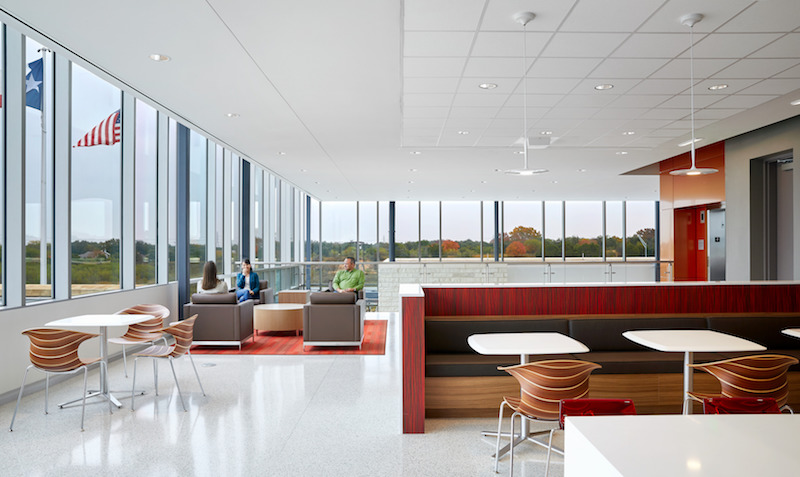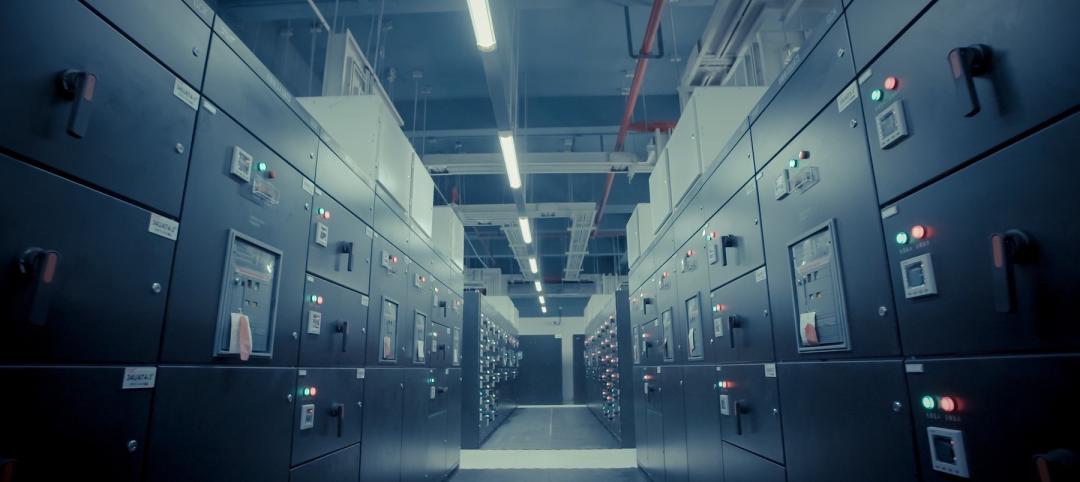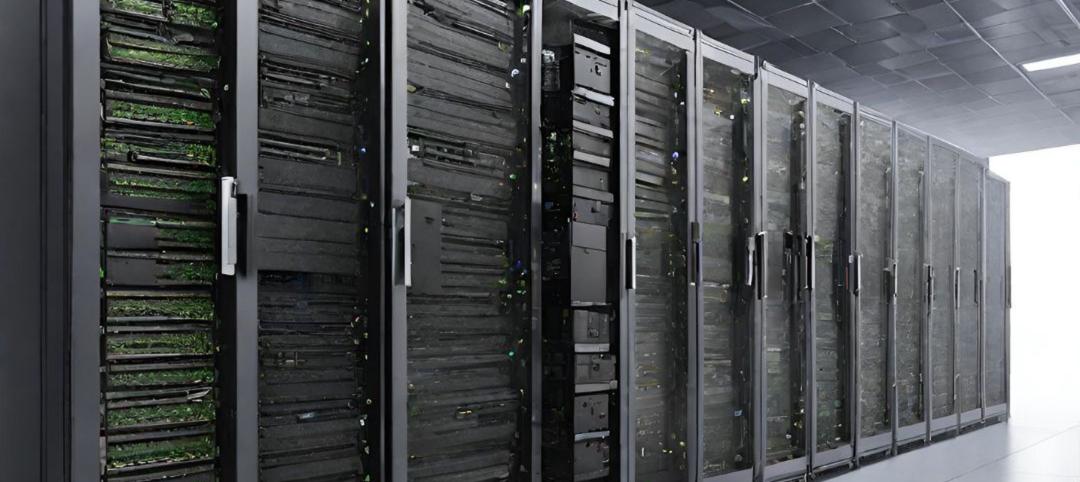Earlier this week, the $40 million, 80,527-sf Bexar Metro Regional Operations Center, a 911 call center that serves 2.5 million residents living in three counties around San Antonio, Texas—Bexar, Guadalupe, and Comal— officially went fully functional.
Within its hardened shell are Mission Critical components that include its emergency and network operations, two data centers, a redundant engineering system, and a Public Safety Answering Point (PSAP) with a 13,878-sf operations floor and 104 consoles. The electrical system meets Tier IV data center standards for maintaining operations regardless of the occurrence of any unplanned activity, and the mechanical system meets Tier III standards.
The building, on a 9.4-acre lot, can withstand Enhanced Fujita 3 (EF3) Scale impact rating wind and ballistic events.
While the most important consideration for building this facility was opportunities for redundancy and uninterrupted power, what separates this Operations Center from many other secured 911 call centers is its non-hardened area around the building’s interior periphery that provides employees—whose long work shifts are broken up by 15-minute breaks—a place where they can decompress, relax, and interact.
That area is a combination of administrative offices, conference rooms, multipurpose training rooms, break rooms, sleep areas, a gym, and kitchen. The building’s north façade is marked by an entry courtyard, an interior courtyard and a third exterior courtyard. Occupant wellness is further enhanced by a design that maximizes access to daylight and high indoor air quality.
“Our design goal was to ‘blend’ the hardened and non-hardened areas seamlessly,” says J.J. Puga, AIA, designer and project manager for Page Southerland Page, which provided architecture, interiors, MEP engineering, fire protection, and project management services. He points out that the design and configuration of the Operations Center dictate that employees must leave their workstations in order to take advantage of the more open, commodious areas.
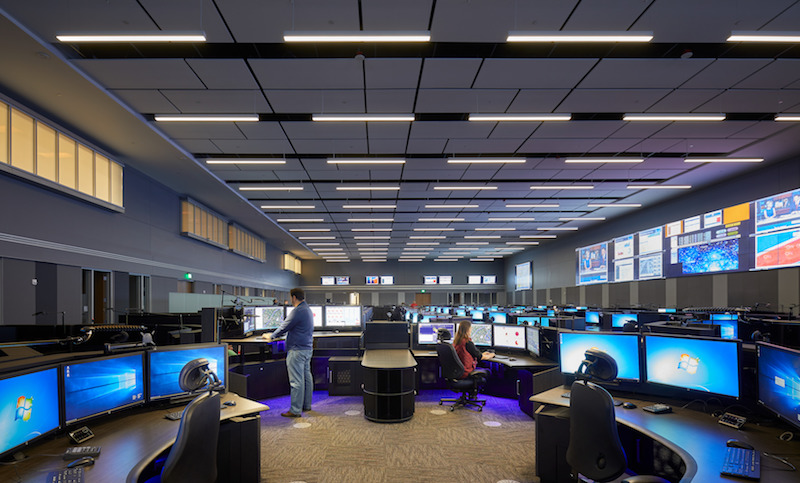
The 13,878-sf operations floor of the Bexar Metro 911 Regional Operations Center includes 104 consoles. Image: Courtesy Page
This building had been in the works for 15 years, but was waylaid until financial, logistical and territorial obstacles were cleared, explains Mike Pedigo, chief of staff for Bexar Metro 911 Network District, which owns the Operations Center.
Challenges included the initial resistance by the Edwards Aquifer Authority to allow the facility’s emergency generator fuel tanks to be installed on the site, for fear of spill containment and water contamination. Puga says Page ultimately demonstrated to the Authority’s satisfaction that the tanks would technically be above ground, and therefore legal within existing codes.
Construction of the Operations Center finally started in January 2015, and was funded through a surcharge fee to phone users within the jurisdiction.
The Building Team included Whiting-Turner (GC), Pape-Dawson Engineers (CE), Walter P. Moore (SE), Rialto Studios (landscape architect), TDSI (AV technology, data, security consultant), Wiss, Janney, Elstner Associates (roof consultant), and HeilExperts International (aeronautical consultant).
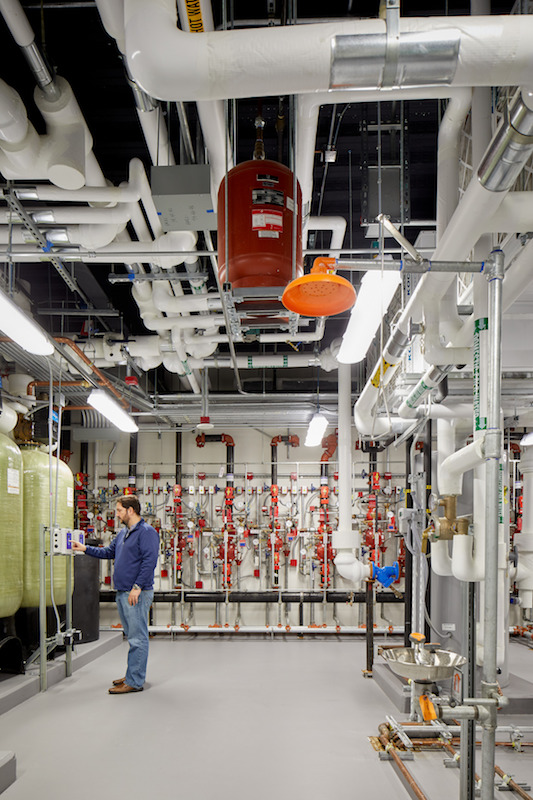
Mechanical and electrical redundancy are perhaps the most important reasons why this Operations Center was built. Two CPS Energy substations provide power to the site simultaneously. Image: Courtesy Page
The facility includes a helipad, at the insistence of Bill Buchholtz, Bexar Metro 911’s Executive Director. It also has 260 parking spaces and charging stations for electric cars and emergency vehicles.
The facility—also known as Quarry Run Operations Center—supports the Bexar County Sheriff’s office and the three counties’ fire and police departments, which provide the facility’s personnel. Prior to the opening of the Operations Center, 911 calls had been handled through 25 different locations within the jurisdiction of the Bexar Metro 911 Network District.
Pedigo says the 150-plus people who work in this building required “a lot of preparation” in terms of learning how to manage a facility of this magnitude. A new 911 system was installed, which also required training.
In early August, this facility is scheduled to become a backup 911 call center for the city of San Antonio, a switch that Pedigo anticipates could take as much as 18 months to fully integrate.
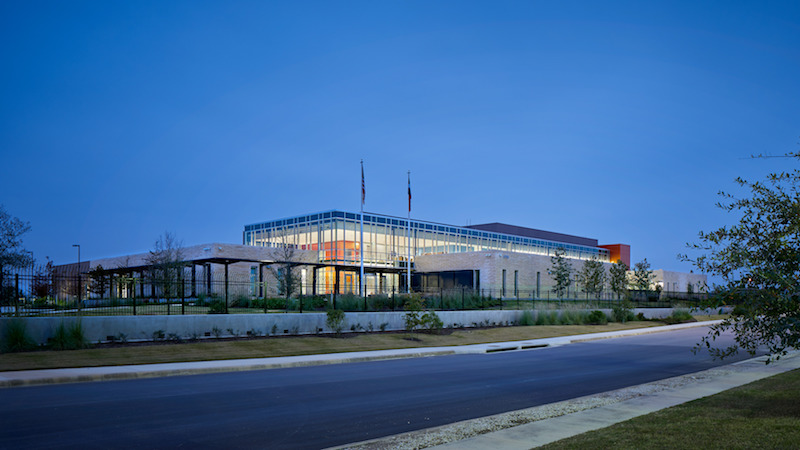
The Operations Center, which sits on a 9.4-acre lot, this summer will start serving as a backup for the city of San Antonio. Image: Courtesy of Page
Related Stories
Data Centers | Oct 1, 2024
10 biggest impacts to the data center market in 2024–2025
While AI sends the data center market into the stratosphere, the sector’s accelerated growth remains impacted by speed-to-market demands, supply chain issues, and design innovation necessities.
Data Centers | Sep 2, 2024
Data center demand continues its feverish growth rate
But JLL’s latest market report worries that the sector is outpacing its manpower and electricity capacities.
Multifamily Housing | Aug 21, 2024
Nation's leading multifamily developer expands into infrastructure
Greystar's strategy for infrastructure is driven by the shifting landscape of today's cities—primarily in the increased digitization, urbanization, and transitions to clean energy.
Data Centers | Aug 8, 2024
Global edge data center market to cross $300 billion by 2026, says JLL
Technological megatrends, including IoT and generative AI, will require computing power to be closer to data generation and consumption, fueling growth of edge IT infrastructure, according to a new JLL report.
Construction Costs | Jul 18, 2024
Data center construction costs for 2024
Gordian’s data features more than 100 building models, including computer data centers. These localized models allow architects, engineers, and other preconstruction professionals to quickly and accurately create conceptual estimates for future builds. This table shows a five-year view of costs per square foot for one-story computer data centers.
Data Centers | Feb 28, 2024
What’s next for data center design in 2024
Nuclear power, direct-to-chip liquid cooling, and data centers as learning destinations are among the emerging design trends in the data center sector, according to Scott Hays, Sector Leader, Sustainable Design, with HED.
Data Centers | Feb 1, 2024
Gen AI will drive data center growth, says latest JLL sector report
Power access is pushing developers toward alternative sources and secondary markets.
Data Centers | Nov 22, 2023
How is artificial intelligence impacting data center design?
As AI is reshaping how we interact with machines and the world around us, the design of data centers needs to adapt to this fast-changing landscape. So, Page pairs expert thinking with high-performing solutions to meet the needs of rapidly advancing technologies.
Data Centers | Nov 13, 2023
Data center sector trends for 2023-2024
Demand for more data centers is soaring, but delivery can be stymied by supply delays, manpower shortages, and NIMBYism.
Giants 400 | Oct 2, 2023
Top 50 Data Center Construction Firms for 2023
Turner Construction, Holder Construction, HITT Contracting, DPR Construction, and Fortis Construction top BD+C's ranking of the nation's largest data center sector contractors and construction management firms for 2023, as reported in Building Design+Construction's 2023 Giants 400 Report.


